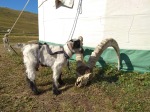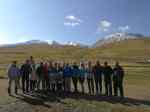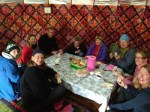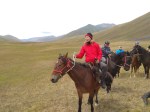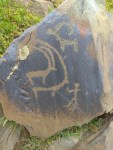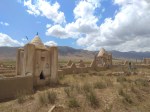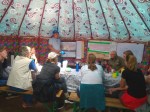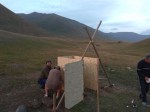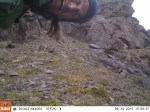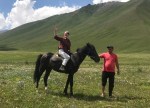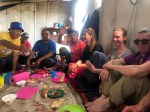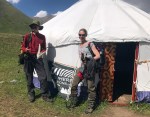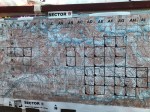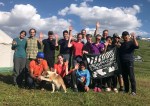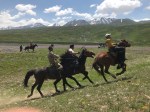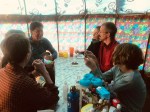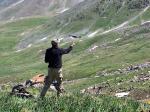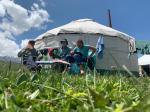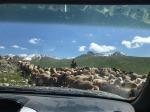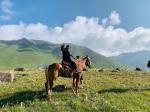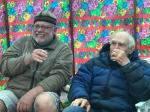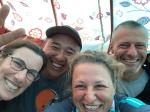After six years of citizen science research in the Tien Shan mountains of Kyrgyzstan, Biosphere Expeditions has definitively proved the presence of the snow leopard in a location previously thought to be devoid of the top level predator. Two night time camera-trap images taken in 2018 were a good indication, but in 2019 a series of camera trap images were taken of the elusive cat that clearly show the coat pattern, thus making it possible to even identify the individual and compare it to data recorded by other organisations to find out where else this cat has been.
“When I was going through the camera trap photos in our field office one evening, I almost fell out of my chair when these amazing shots of the snow leopard came up. I ran out and called to everyone to come and take a look. It was such an excellent moment for our research team,” says Amadeus DeKastle, expedition leader for Biosphere Expeditions.
“These excellent photographs of the snow leopard make all the effort we’ve put in to our research worth every second,” says Dr. Volodymyr Tytar, the expedition scientis. Dr. Tytar has been working in snow leopard research for more than 15 years, but 2019 was a special year. “When we first arrived here in Kyrgyzstan to begin our work in 2014, we kept being told that we wouldn’t find anything in this region. In fact, over the past six years we have recorded quite a number of animals that nobody expected, including the snow leopard.” In addition to the snow leopard, 2019 saw the addition of definitive Manul tracks at high elevation, the first direct sighting of two argali sheep in the region for four years, the first ever record of a Turkestan red pika in the valley, and records of 73 different bird species.
Biosphere Expeditions’ project in the Tien Shan stems from the Global Snow Leopard and Ecosystem Protection Program, where, in 2013, representatives from all 12 Asian countries where the snow leopard roams made a historic pledge in the Kyrgyzstan capital of Bishkek to protect and conserve snow leopards and the high mountain habitats they call their home. Biosphere
Expeditions was part of this highly significant occasion and continues to run an annual snow leopard conservation expedition to Kyrgyzstan, which gives ordinary people the chance to come and play an active and hands-on part in the conservation of this iconic species.
The snow leopard, like many species, is threatened by poaching, retaliatory killings and habitat loss. It is estimated that fewer than 7,500 snow leopards remain in the wild. One goal formulated in Bishkek is the 20/20 pledge – to protect 20 snow leopard landscapes that have over 100 breeding adults by 2020, and to promote sustainable development in areas where the species lives. “This is as big as it gets in terms of top-level conservation news”, says Dr. Tytar, “and it is a privilege to be part of the challenge, together with my colleagues in field science and many others, to preserve this iconic cat. But what we do goes far beyond a single cat species, beautiful as it is in its own right, because successful species conservation is all about creating positive impact well beyond the target species, namely for those people that share their daily lives and landscapes with the snow leopard. As specified in the Conservation Strategy for Snow Leopard in Russia, 2012-2022, much can be achieved in the socio-economic context of snow leopard conservation by
‘…developing collaborations with such internationally known organisations as Biosphere Expeditions…’ (p.81). And this is exactly what we have set out do and are achieving with our research expedition”, Dr. Tytar adds “This latest success just goes to show how important our work is here and I would like to thank everyone who has been involved over the years”, Dr. Tytar concludes.
Below are some video and pictures impressions of the 2019 expedition:
































































































































































































